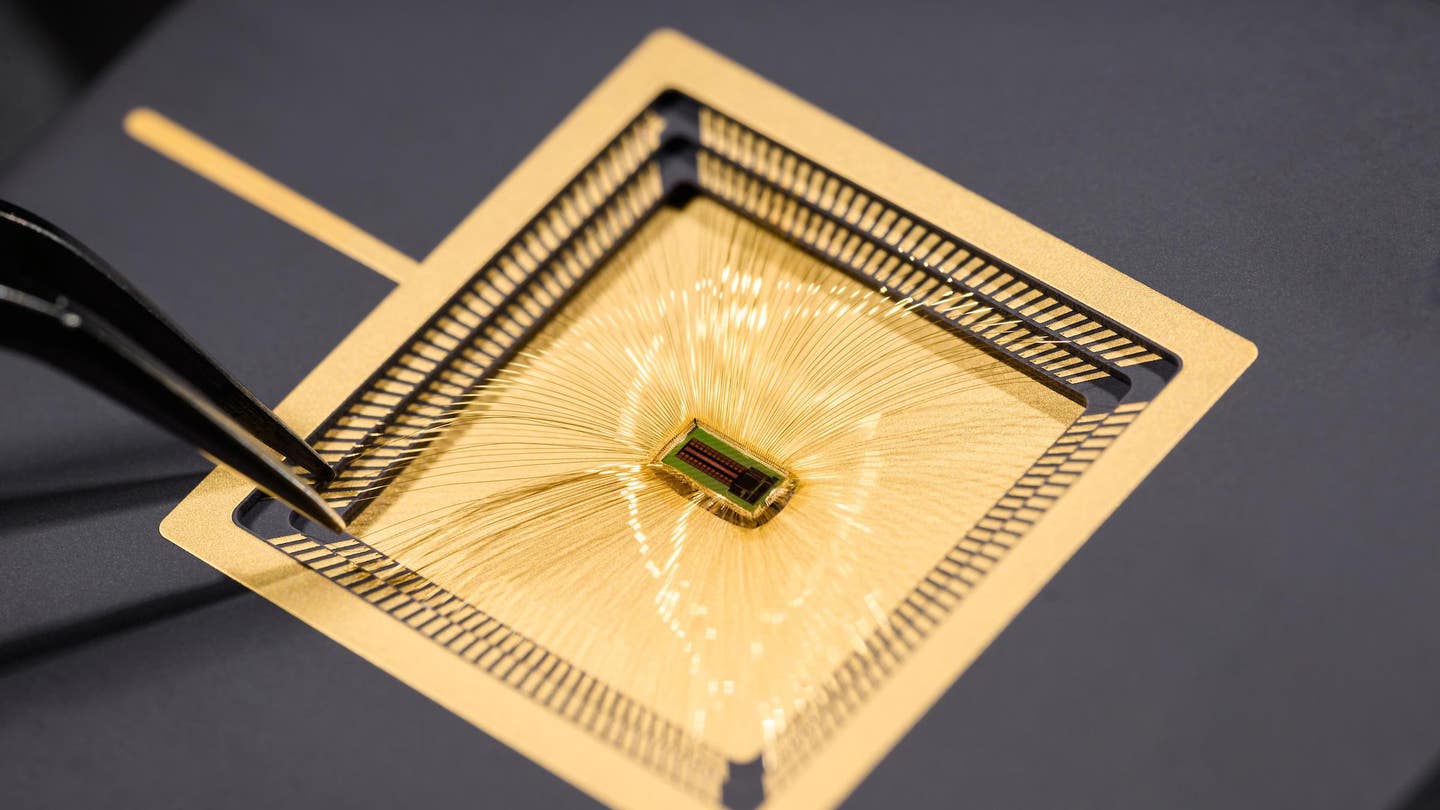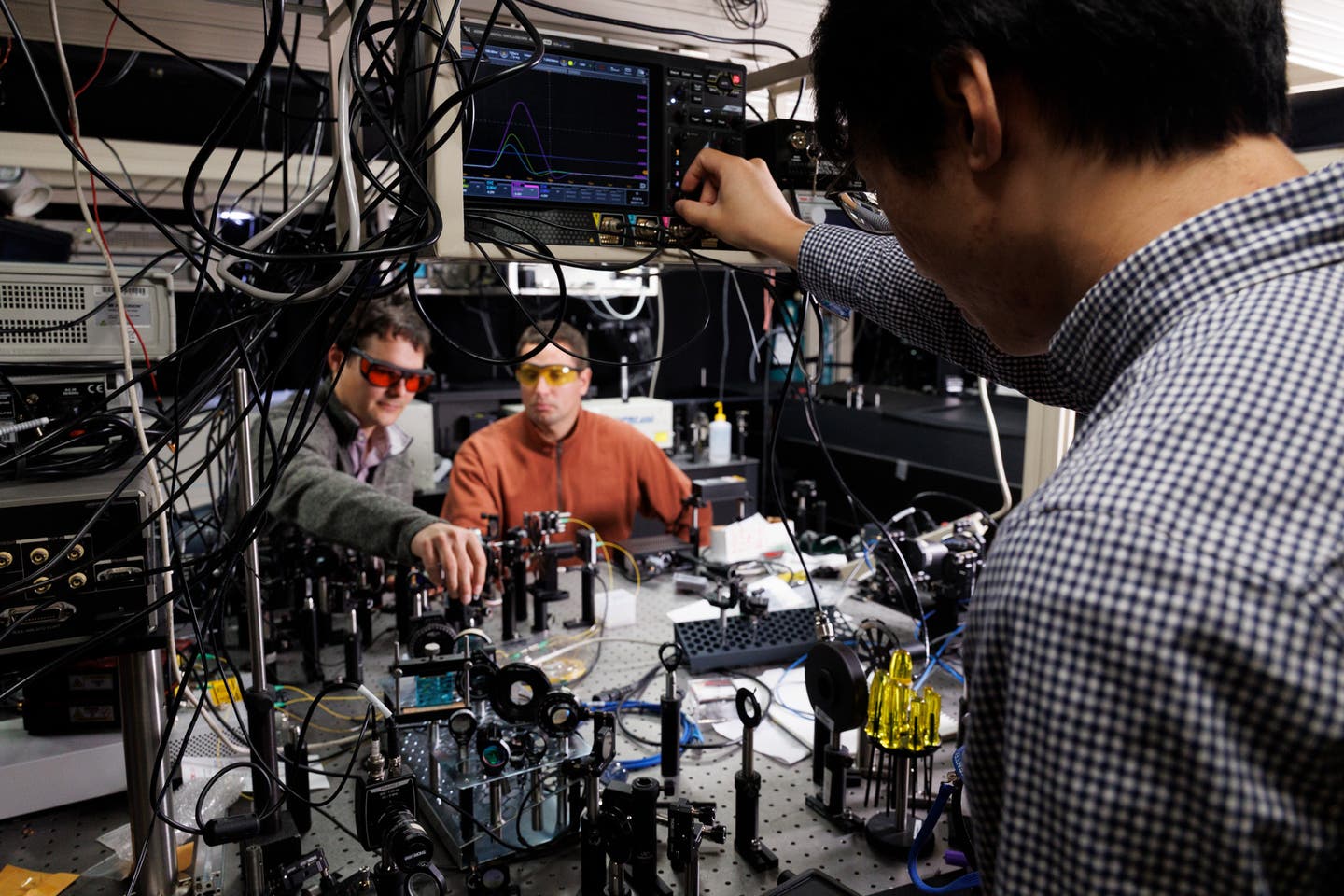First-ever integrated microchip converts brain activity directly to text
The chip has processed data from previous live recordings achieving an impressive 91% accuracy in converting handwriting activity into text.

Researchers from EPFL have developed a next-generation miniaturized brain-machine interface capable of direct brain-to-text communication on tiny silicon chips. (CREDIT: EPFL)
Brain-machine interfaces (BMIs) have rapidly evolved as a potential lifeline for those grappling with severe motor impairments, offering a way to restore communication and control. However, the journey toward making these systems practical has been challenging due to their traditionally bulky and power-hungry nature.
That’s where the innovative Miniaturized Brain-Machine Interface (MiBMI) developed by researchers at EPFL comes in. This breakthrough offers a compact, low-power, and highly accurate solution, marking a significant leap forward in the field of BMIs.
The MiBMI, as detailed in the IEEE Journal of Solid-State Circuits and showcased at the International Solid-State Circuits Conference, is not just another advancement in neurotechnology. It represents a paradigm shift, enabling the creation of practical, fully implantable devices that could dramatically improve the lives of individuals with conditions like amyotrophic lateral sclerosis (ALS) and spinal cord injuries.
A key feature of this system is its size and power efficiency. The MiBMI is designed to be small enough for implantable use, with the entire system occupying a mere 8mm², divided between two minuscule chips. This tiny footprint makes it suitable for real-world clinical applications, offering minimal invasiveness, which is crucial for safety and practicality. Mahsa Shoaran’s Integrated Neurotechnologies Laboratory (INL) at EPFL’s IEM and Neuro X institutes spearheaded the development of this new class of low-power BMI devices.
Shoaran highlights the transformative potential of this technology, stating, “MiBMI allows us to convert intricate neural activity into readable text with high accuracy and low power consumption. This advancement brings us closer to practical, implantable solutions that can significantly enhance communication abilities for individuals with severe motor impairments.”
The process behind brain-to-text conversion involves decoding neural signals produced when someone imagines writing. Electrodes implanted in the brain pick up neural activity linked to the motor actions of handwriting.
Related Stories
The MiBMI chipset processes these signals in real-time, translating the brain’s intended hand movements into corresponding digital text. This innovation empowers individuals with locked-in syndrome or similar conditions to communicate through mere thought, with the interface converting these thoughts into text displayed on a screen.
Although the chip has yet to be integrated into a fully operational BMI, it has already shown impressive results. According to Mohammed Ali Shaeri, the lead author, the chip has processed data from previous live recordings, such as those from the Shenoy lab at Stanford, achieving an impressive 91% accuracy in converting handwriting activity into text.
The current system can decode up to 31 different characters, a feat that no other integrated systems have matched. Shaeri expresses confidence in the chip's potential, saying, “We are confident that we can decode up to 100 characters, but a handwriting dataset with more characters is not yet available.”
Unlike current BMIs, which typically send neural signals from the brain to a separate computer for decoding, the MiBMI performs both recording and processing in real-time. It integrates a 192-channel neural recording system with a 512-channel neural decoder, exemplifying extreme miniaturization and combining expertise in integrated circuits, neural engineering, and artificial intelligence. This makes the MiBMI a significant player in the rapidly growing neurotech startup sector, where integration and miniaturization are essential for success.
The researchers took a novel approach to handle the vast amount of data collected by the electrodes in the MiBMI. They identified unique markers in brain activity, termed distinctive neural codes (DNCs), associated with each letter imagined by the patient. Instead of processing thousands of bytes of data for each letter, the microchip focuses on these DNCs, which are only about a hundred bytes. This approach enhances the system's speed, accuracy, and energy efficiency. Furthermore, it shortens training times, making it easier and more accessible for users to learn how to operate the BMI.
Collaborations with other research teams at EPFL, including those led by Grégoire Courtine, Silvestro Micera, Stéphanie Lacour, and David Atienza, promise to push the boundaries of integrated BMI systems even further. Shoaran and Shaeri's team is already exploring various applications for the MiBMI beyond handwriting recognition.
Shoaran notes, “We are collaborating with other research groups to test the system in different contexts, such as speech decoding and movement control. Our goal is to develop a versatile BMI that can be tailored to various neurological disorders, providing a broader range of solutions for patients.”
The MiBMI stands at the forefront of BMI innovation, offering a glimpse into a future where practical, implantable devices could transform the lives of those with severe motor impairments. By focusing on miniaturization, power efficiency, and real-time processing, this technology could pave the way for broader applications, bringing hope and new possibilities to those who need it most.
Note: Materials provided above by The Brighter Side of News. Content may be edited for style and length.
Like these kind of feel good stories? Get The Brighter Side of News' newsletter.



